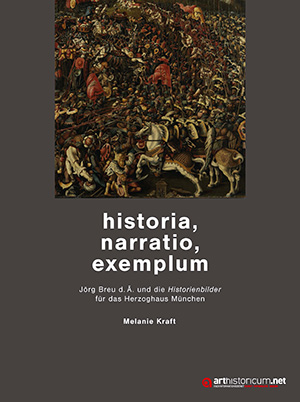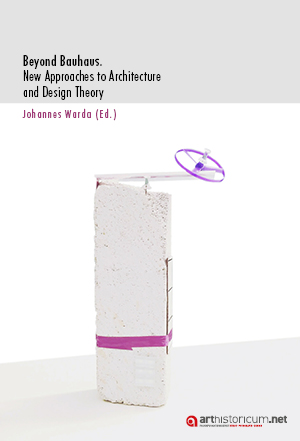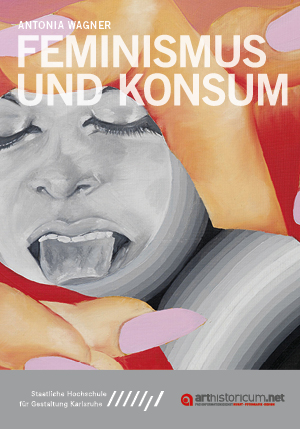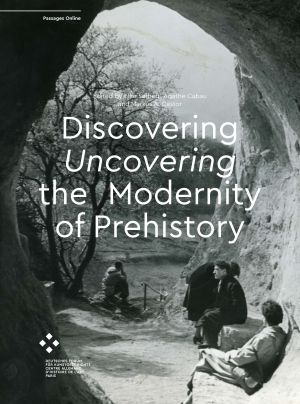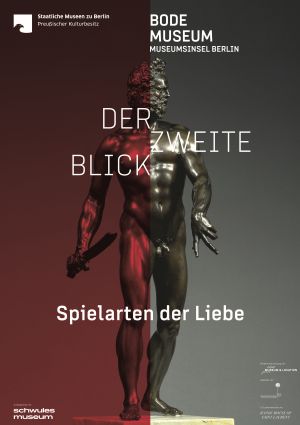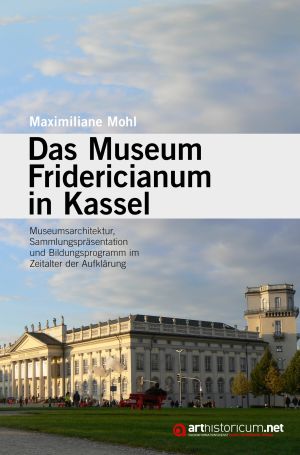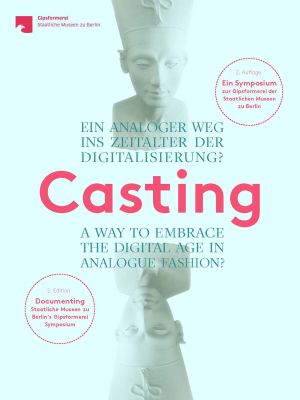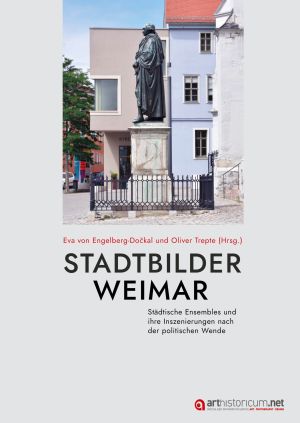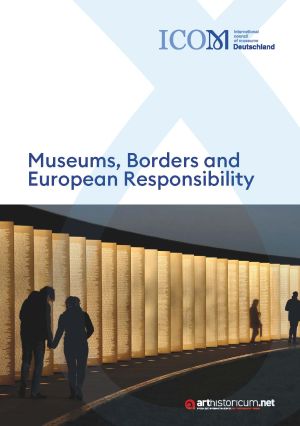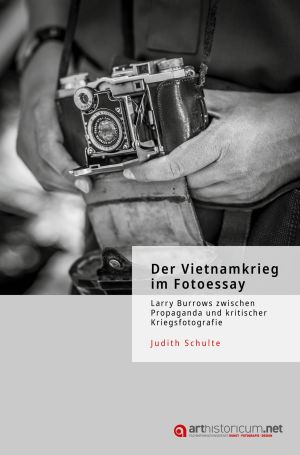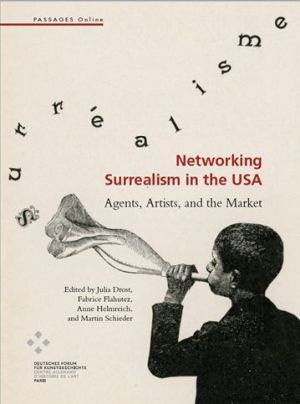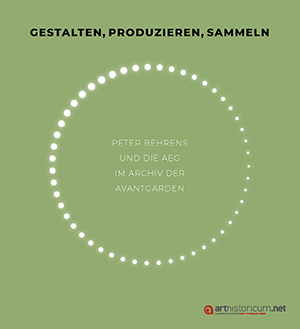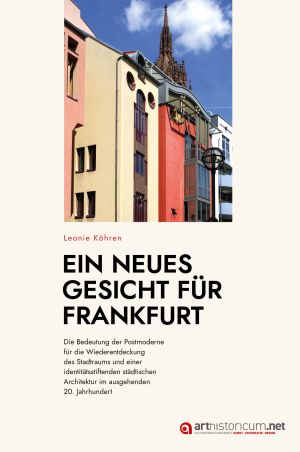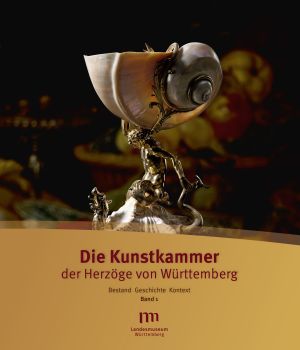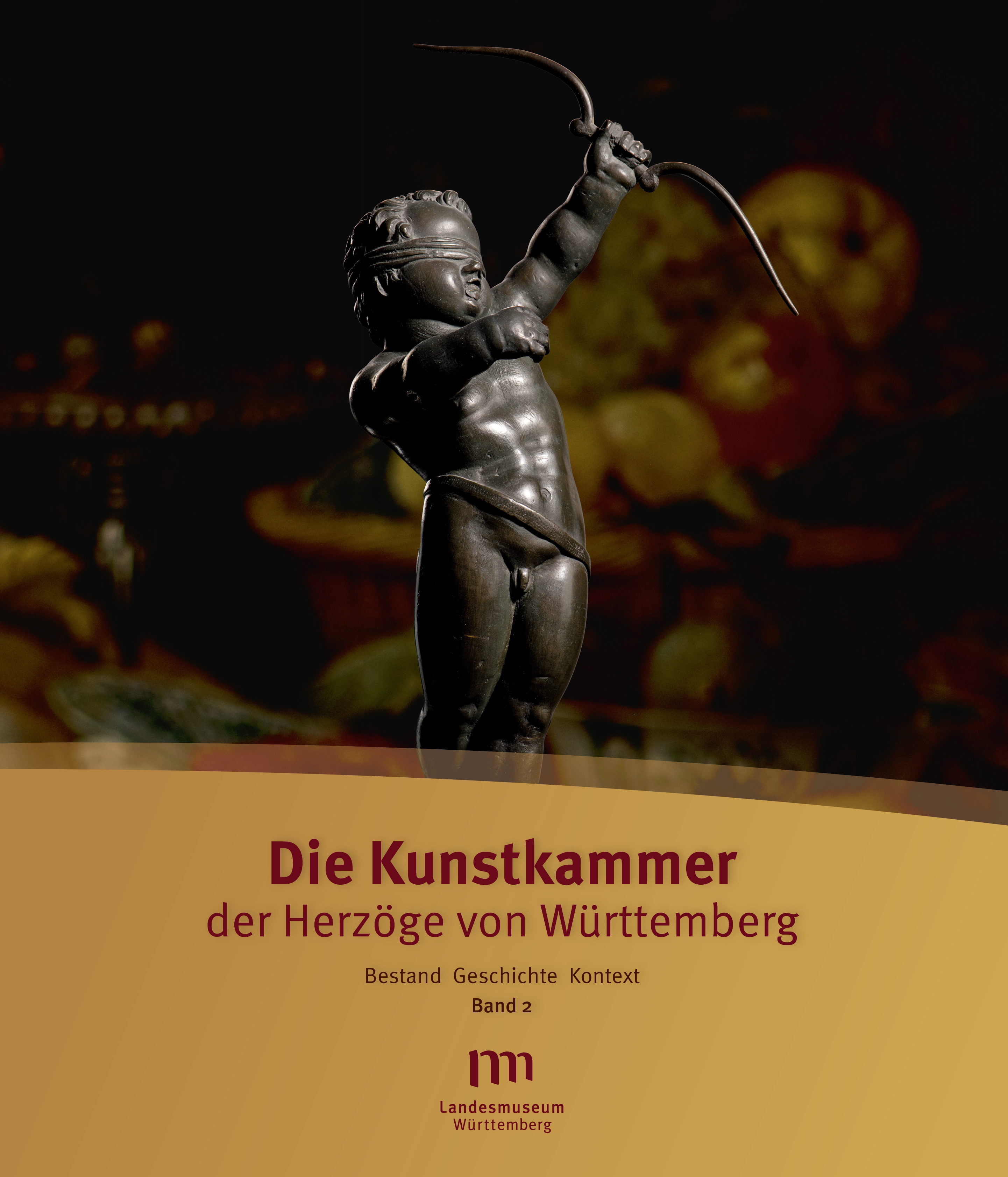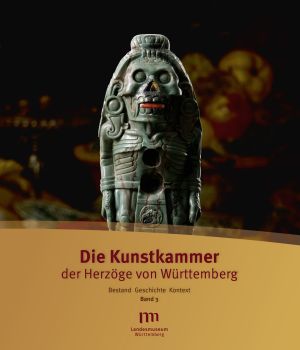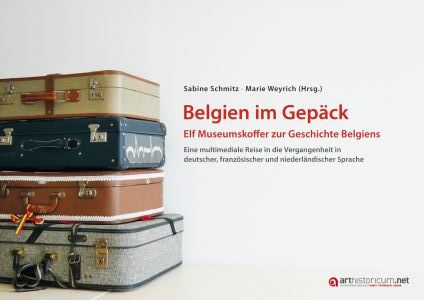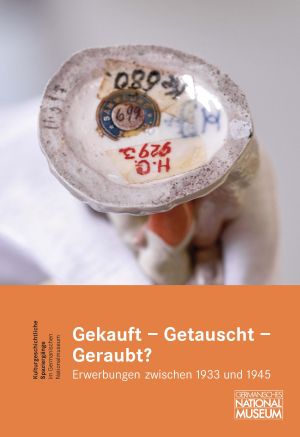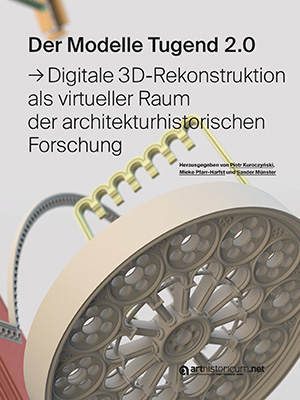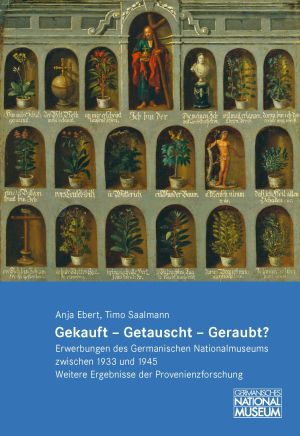Books
historia, narratio, exemplum: Jörg Breu d. Ä. und die Historienbilder für das Herzoghaus München
The Augsburg artist Jörg Breu the Elder (1475/80 - 1540) worked for numerous high-ranking clients, such as Maximilian I, the Fugger or the Ducal House Munich, from which one of his most prestigious commission went out: For the so-called history paintings he created the history of Lucretia and the Battle of Zama.
Based on these panels, the study focuses on the narrative strategy and the image theorem of Breu in the context of his œuvre, the commission, contemporaries such as Hans Burgkmair or Albrecht Altdorfer, and his relationship with the Munich court. For the first time, Breus' pictorial inventions are analyzed in order to make a hitherto neglected painter of the German Renaissance more tangible.
best of: 111 Geschichten aus dem Weltenmuseum
Why are fish in the Pacific more colourful than their relatives in the North Sea or the Baltic? Were there dinosaurs in Lower Saxony? Where did the first humans live? How did globalisation begin and when did art start?
This book provides answers to many such questions. In 111 objects, you are taken on a journey through the WeltenMuseum whose collections are a reflection of our world. Transcending space and time, they tell stories – from 240 million years old sea lilies to the present inhabitants of land and sea, from the Gamelan orchestra from faraway Indonesia to the gold necklace from Isenbüttel, from the earliest artisan products by the first humans to the world’s largest collection of German impressionists. Wonderful photos and captivating texts speak to all generations, providing an introduction to the secrets of our continent.
Beyond Bauhaus: New Approaches to Architecture and Design Theory
The ever new preoccupation with the avant-garde movements of the 20th century is an integral part of the theoretical discourse of architecture, art and design. The authors of this volume take the 100th anniversary of the Bauhaus as an occasion for a critical revision of its pedagogical concepts, gender policy and design theoretical implications. Finally, the contributions open up new perspectives on the increasingly hybridising fields of the design disciplines between virtual environments, the aesthetics of sustainable design, biotechnology and the question of a postcolonial ethic.
Digitale 3D-Modelle historischer Architektur: Entwicklung, Potentiale und Analyse eines neuen Bildmediums aus kunsthistorischer Perspektive
Digital 3D models of historical architecture ➔ Development, potentials and analysis of a new visual medium from an art historical perspective for the first time offers a comprehensive historical overview of the genesis of digital architectural reconstructions from an art historical perspective. The central aim of the book is to show the potential of this new visual medium and research tool in the humanities and cultural sciences by means of an art-historical analysis of digital 3D models. Essential discourses, desiderata and needs for action in the areas of hypothesis visualization, documentation of the reconstruction process and long-term archiving are discussed. The book offers the scientific community a sound basis for locating digital 3D models of historical architecture in the context of possible research questions, essential needs for action and for initiating impulses for future projects.
Feminismus und Konsum
Ist Konsumieren ein Symbol für gesellschaftliche Freiheiten? Oder (re-)produziert Konsum eine Geschlechterordnung, die ‚die Frau‘ auf ein Objekt männlichen Begehrens reduziert? Konsumieren ist Ausdruck von Lust, macht Arbeit und lebt durch Bilder. Die hier vorliegende differenzierte Betrachtung zeigt, wie widersprüchlich Weiblichkeit in Konsumkulturen konstruiert wird. Entsprechend zeigen sich feministische Positionen der 1960er bis 1980er Jahre kritisch gegenüber der Konsumkultur, reflektieren gleichwohl auch die potentielle Macht der Konsumentin und einer feministisch geprägten Konsumästhetik. Diese feministischen ästhetischen Haltungen gegenüber dem Kaufen, dem Benutzen, dem Betrachten oder dem Verzehren käuflicher Dinge werden anhand von Werken weiblicher Künstlerinnen wie Evelyne Axell, Nathalia LL, Martha Rosler, Christa Dichgans, Sanja Iveković und Judith Barry herausgearbeitet.
Microstructures of global trade: Porcelain acquisitions through private trade networks for Augustus the Strong
In 1716, Italian officer Peter Robert Taparelli Count of Lagnasco was sent to The Hague by the Saxon-Polish Elector-King Augustus the Strong to purchase East Asian porcelain. The correspondence surrounding this undertaking is a thorough account of the trading situation in the Netherlands. The transcribed letters illustrate the availability of Asian goods, the competition among buyers, prices and trade networks, as well as the objects that were bought for the king. The publication examines the importance of individual merchants and their role in supplying the Saxon court with East Asian luxury goods.
Discovering/Uncovering the Modernity of Prehistory
The research field of prehistory and modernity is very topical in both French as well as German art history, though the traditions differ. In view of this historical situation, the conference’s goal (German Center for the History of Art Paris, 2017) was to raise awareness and initiate a dialog, which opened up new perspectives for all participants and generated innovative research. Prehistory, or primeval times, leads back to fundamental art historical questions: When did abstraction begin? What specific qualities of prehistoric artefacts contributed to solutions to artistic problems of the European avant-gardists like Picasso, Miró, Baumeister, Giacometti or Bataille? What is characteristic of prehistoric art as compared to other arts premiers? Work-related questions stood at the center of the discussions and revealed interdisciplinary connections and opened debates intended to inspire further research.
Konferenzband EVA Berlin 2019. Elektronische Medien & Kunst, Kultur und Historie: 26. Berliner Veranstaltung der internationalen EVA-Serie Electronic Media and Visual Arts
“BASED ON TRUST! Culture in Virtual Environment” is the focus of this year’s conference. It alludes to the oscillating field of tension that has been opened up between data identity and the real presence of cultural heritage. Digital transformation has made available the collection objects in cyberspace. Concerts and performances are transmitted as datastreams, and education and learning is continuously improved by the use of the VR. Digital telepresence technologies, thus, expand the visibility of cultural heritage and generate new contexts, narratives and perspectives.
But how can we represent credibility and uniqueness of the material evidence of the objects in digital data streams? What technical requirements are associated with the creation of plausible and citable scenarios and atmospheres in VR? The claim «Based on Trust» refers to all areas of the «virtualization of the museum» in 2D, 3D, sound and video formats as well as in e-installations, explorative VR applications and AI. Authenticity and credibility are not self-evident at all in digital media. They require complex attribution processes and data curatorial expertise. The Berlin EVA Conference deals with these topics at the interface between memory institutions, public administrations, technology providers and information scientists.
Der zweite Blick: Spielarten der Liebe
The Second Glance is a new exhibition series that provides a multi-perspectival engagement with the permanent collection of the Bode Museum through themes of contemporary social relevance. The objects in the collections cover over 1,500 years of Europe’s artistic and cultural history, making them particularly well-suited for exhibition formats that deal with human identities and their artistic embodiment. "All Forms of Love", the first installment in the series, offers a second look at works that, in a variety of ways, provide access to the theme of the diversity of sexual identities.
Weitere Publikation: Der zweite Blick: Frauen
Das Museum Fridericianum in Kassel: Museumsarchitektur, Sammlungspräsentation und Bildungsprogramm im Zeitalter der Aufklärung
Museums and museum visits? Something we take for granted in the 21st century! However, art has only been accessible for everyone, through museum collections, since the end of the 18th century – the beginning of the Enlightenment. A landmark in this democratization of art and museum access, was the construction of the Museum Fridericianum in Kassel, the first autonomous, solitary museum building on the European continent.
This work examines the eventful architectural history of the Museum Fridericianum, placing it in the context of the international architecture of early Classicism as well as within the political circumstances and the urban context of the time.
Casting. A way to embrace the digital age in analogue fashion? A symposium on the Gipsformerei of the Staatlichen Museen zu Berlin
2. revised edition
The Gipsformerei, the oldest establishment of the Staatlichen Museen zu Berlin still active today, will be celebrating its 200th anniversary in a few years time. The Gipsformerei’s forthcoming anniversary is a welcome opportunity for us to address the following question: How can an institution whose core activity lies in traditional handcrafted production hold its own in the face of technical innovation? The publication addresses that question and adds an interesting cross-section on the current research debate. Besides all the papers presented at the symposium the panel discussion and the final discussion are summarized in English and German at the end of the production.
Renationalisierung oder Sharing Heritage? Wo steht die Denkmalpflege im Euopäischen Kulturerbejahr 2018?
„Überall in Europa erleben wir gegenwärtig deutliche Renationalisierungsbewegungen und eine Inanspruchnahme des kulturellen Erbes für Identitätsbildungsprozesse von Ländern und Regionen. Im Zuge dessen werden die Grenzen zu Anderen deutlicher als zuvor markiert und Fragen der Zugehörigkeit zum Erbe kritisch ventiliert (z.B. gehört der Islam zu Deutschland/Europa? müssen wir Grenzkontrollen reaktivieren? etc.). Diesem Trend suchen europäische Institutionen durch die Betonung gemeinsamer Werte und Traditionen entgegenzusteuern – nach der Deklaration von Faro 2005 gilt das nicht zuletzt für die Ausrufung des europäischen Kulturerbejahres, das 2018 unter dem Motto Sharing Heritage steht und zu einer Neu-Betrachtung des kulturellen Erbes unter Prämissen des Kulturtransfers und der Rezeption von Ideen auffordert. Grenzräume erfahren dabei als Austauschregionen, aber auch als potentielle Konfliktregionen eine besondere Beachtung. Denkmalpflege, Archäologie und Museologie sind durch die aktuellen Neubewertungen des kulturellen Erbes wie alle anderen sammelnden Fächer zu einer Positionsbestimmung herausgefordert.“
Ingrid Scheurmann
Stadtbilder Weimar: Städtische Ensembles und ihre Inszenierungen nach der politischen Wende
The result of a seminar held at the Bauhaus-Universität Weimar in the summer semester of 2018, this volume offers a discerning overview of architectural and urban development in Weimar after the political change. The common perception of the inner city as a still-intact historical centre is critically reflected upon. The extent of construction and its influence on present cityscapes is discussed based on the examination of several different areas. Beginning with the building activities of the 1990s, the articles discuss the creation of urban identity, especially Weimar’s role in the Model City Programme, as UNESCO World Heritage Site, and a European Cultural City in 1999. The main questions focus on dominant themes and defining identifying objects, particularly regarding modern architecture coexisting with the traditional motif of the classic city.
Museums, Borders and European Responsibility: One Hundred Years after the First World War
Museums are the treasure troves of cultural heritage, places of remembrance and self-assurance. But whose stories are they telling, and why? What is remembered in museums, and what is forgotten?
One hundred years after the end of the First World War, museum practitioners and scholars from Europe and beyond reflect anew on the impacts of the war. They consider the central role museums play in the accurate and authentic representation of war, the shaping of commemoration and the preservation of war‘s legacy. They explore difficult issues including diverse and conflicting perspectives of war, political influence and the question of European responsibility.
They argue for the confident inclusion of critical voices and diverse perspectives, and deeper thinking about the impact of violence and dogma on European society.
Der Vietnamkrieg im Fotoessay: Larry Burrows zwischen Propaganda und kritischer Kriegsfotografie
Photojournalism as was practiced during the Vietnam War is considered particularly direct and straight. Based on photographic essays by Larry Burrows, the study analyses the American representation of the war in Life Magazine and its subsequent reception in historical, media-scientific and art-historical contexts. Hereby, criteria and image patterns of authenticity are verified and checked.
The studies show a changing image of war, which is still strongly influenced by colonial pictorial patterns. Photography in the style of combat photography - later made into a principle in embedded journalism - can already be shown as a form of propaganda for the Vietnam War.
Networking Surrealism in the USA: Agents, Artists, and the Market
This volume brings the complex networks that fostered and sustained surrealism in North America into academic focus. Who — among collectors, critics, dealers, galleries, and other kinds of mediating agents — supported the artists in the surrealist orbit, in what ways, and why? What more can be learned about highprofile collectors such as the de Menils in Houston or Peggy Guggenheim in New York? Compared to their peers in Europe, did artists in the United States use similarly spectacular strategies of publicity and mediation? In what networks did the commercial galleries operate, locally and internationally, and how did they dialogue with museums? This book offers an innovative and lasting contribution to research and scholarship on the history of art in America, while focusing specifically on the expansion and reception of surrealism in the United States.
Gestalten, produzieren, sammeln: Peter Behrens und die AEG im Archiv der Avantgarden
Peter Behrens sah seine Aufgabe als künstlerischer Beirat der AEG nicht auf den Bereich der „Produktgestaltung“ beschränkt, sondern verstand die Berufung als einen umfassenden künstlerischen Gestaltungsauftrag im Sinne eines Corporate Designs. Als Lehrer von Walter Gropius und Ludwig Mies van der Rohe sowie als Mitbegründer des deutschen Werkbundes war er eine Leitfigur in der Diskussion um die neue Sachlichkeit in Deutschland und stellte durch seine Arbeit entscheidende Weichen für die Gründung des Bauhauses. Dementsprechend wird den Objekten, die Behrens für die AEG entworfen hat, in diesem Jahr, dem 100. Jubiläumsjahr des Bauhauses, eine kleine Ausstellung im Archiv der Avantgarden in Dresden gewidmet. Der Katalog zeigt zahlreiche seiner berühmt gewordenen Objekte für die AEG aus der Sammlung Mazona, die im AdA aufbewahrt werden.
Ein neues Gesicht für Frankfurt: Die Bedeutung der Postmoderne für die Wiederentdeckung des Stadtraums und einer identitätsstiftenden städtischen Architektur im ausgehenden 20. Jahrhundert
By what means can it be achieved that war-ravaged German cities even decades after the end of the Second World War will find their way back to identity shaping cityscape? Against the background of the completion of the reconstruction of Frankfurt’s Old Town in 2018, this question still remains topical. The long neglected architecture of postmodernism can point to perspectives, whose qualities are still underestimated. Their significance should be specified in this study on the basis of selected Frankfurt buildings of the eighties, because the most impressive example of that diverse building culture possesses the city of Frankfurt with a whole ensemble of postmodern architecture.
Die Kunstkammer der Herzöge von Württemberg: Bestand, Geschichte, Kontext
Band 1
Wie viele Fürsten legten auch die Herzöge von Württemberg ab dem ausgehenden 16. Jahrhundert eine Kunstkammer an. Neben den kostbaren kunsthandwerklichen Arbeiten umfasste die Sammlung Exotica, magische Gegenstände, Bronzen, wissenschaftliche Instrumente, Miniaturen und vieles mehr.
Über 30 einführende Essays und mehr als 330 Objektbeschreibungen stellen die württembergische Kunstkammer, ihre Bestände und ihre wechselvolle Geschichte vor. Durch die ungewöhnlich reiche archivalische Überlieferung konnten der jeweilige Eingang der Objekte in die Kunstkammer, sowie die sich im Laufe der Zeit wandelnden Schwerpunkte der Sammlung rekonstruiert und deren Geschichte kontextualisiert werden.
Die Kunstkammer der Herzöge von Württemberg: Bestand, Geschichte, Kontext
Band 2
Wie viele Fürsten legten auch die Herzöge von Württemberg ab dem ausgehenden 16. Jahrhundert eine Kunstkammer an. Neben den kostbaren kunsthandwerklichen Arbeiten umfasste die Sammlung Exotica, magische Gegenstände, Bronzen, wissenschaftliche Instrumente, Miniaturen und vieles mehr.
Über 30 einführende Essays und mehr als 330 Objektbeschreibungen stellen die württembergische Kunstkammer, ihre Bestände und ihre wechselvolle Geschichte vor. Durch die ungewöhnlich reiche archivalische Überlieferung konnten der jeweilige Eingang der Objekte in die Kunstkammer, sowie die sich im Laufe der Zeit wandelnden Schwerpunkte der Sammlung rekonstruiert und deren Geschichte kontextualisiert werden.
Die Kunstkammer der Herzöge von Württemberg: Bestand, Geschichte, Kontext
Band 3
Wie viele Fürsten legten auch die Herzöge von Württemberg ab dem ausgehenden 16. Jahrhundert eine Kunstkammer an. Neben den kostbaren kunsthandwerklichen Arbeiten umfasste die Sammlung Exotica, magische Gegenstände, Bronzen, wissenschaftliche Instrumente, Miniaturen und vieles mehr.
Über 30 einführende Essays und mehr als 330 Objektbeschreibungen stellen die württembergische Kunstkammer, ihre Bestände und ihre wechselvolle Geschichte vor. Durch die ungewöhnlich reiche archivalische Überlieferung konnten der jeweilige Eingang der Objekte in die Kunstkammer, sowie die sich im Laufe der Zeit wandelnden Schwerpunkte der Sammlung rekonstruiert und deren Geschichte kontextualisiert werden.
Belgien im Gepäck – Elf Museumskoffer zur Geschichte Belgiens: Eine multimediale Reise in die Vergangenheit in deutscher, französischer und niederländischer Sprache
Belgien gehört zu den unentdeckten Nachbarn Deutschlands. Die im Katalog vorgestellten elf Museumskoffer laden zu einer virtuellen Entdeckungsreise ein, die Lust darauf machen soll, Belgien zu erkunden: Texte in deutscher, französischer und niederländischer Sprache, Abbildungen der Koffer sowie durch Barcodes abrufbare Filmeinheiten eröffnen einen multimedialen Zugang zu wichtigen Stationen der deutsch-belgischen Vergangenheit seit dem Ersten Weltkrieg. Zugleich wird mit dem Museumskoffer ein Medium vorgestellt, das Kulturwissenschaft, Geschichte, Sprachpraxis, Kunstpädagogik und interkulturelle Didaktik zusammenführt und daher für Museen, Schule und Hochschule ein spannendes Medium ist.
Gekauft – Getauscht – Geraubt? Erwerbungen zwischen 1933 und 1945
Kulturgeschichtliche Spaziergänge im Germanischen Nationalmuseum, Band 18
Die Frage nach der Herkunft ihrer Sammlungsobjekte stellt sich Museen heute aktueller denn je. Seit 2014 recherchiert ein Forschungsteam die Erwerbungen des Germanischen Nationalmuseums während der NS Zeit mit dem Ziel, NS-verfolgungsbedingt entzogene und somit unrechtmäßig in das Museum gelangte Werke zu identifizieren. Der reich bebilderte Band stellt in zehn wissenschaftlichen Aufsätzen und acht Exkursen ausgewählte Objekte und ihre Provenienz vor. Die Beiträge verfolgen den Weg der Objekte ins Museum und beleuchten die Schicksale der Personen, die mit ihnen handelten, sie sammelten oder in ihren Besitz brachten.
Der Modelle Tugend 2.0: Digitale 3D-Rekonstruktion als virtueller Raum der architekturhistorischen Forschung
The Model Virtue 2.0 - Digital 3D-reconstruction as a virtual space of architectural-historical research understands digital 3D-reconstruction as part of interdisciplinary object-based research. In the guise of a manual, comprehensive methodologies at the interface between archaeology, art and architectural history and computer graphics and cultural informatics are presented and discussed. The central aim of the book is to illustrate the width of the current scientific debate focused on digital 3D reconstructions and to present previous traditions and developments, the current state of research and practice as well as future challenges and desiderata. Students, scientists and interested laypersons will receive a profound overview of the topic of digital 3D reconstruction in the field of architectural history. The work also offers the specialist community a solid basis and thus the point of departure for the identification of future fields of action and suggestions for further debate.
Gekauft – Getauscht – Geraubt? Erwerbungen des Germanischen Nationalmuseums zwischen 1933 und 1945: Weitere Ergebnisse der Provenienzforschung
Mit der Untersuchung der Herkunftsgeschichte der Bestände seiner Kernsammlungen hat das Germanische Nationalmuseum (GNM) einen wichtigen Schritt für die Ermittlung von NS-verfolgungsbedingt entzogenem Kulturgut getan.
Zum Abschluss des Projektes „Systematische Provenienzforschung“ präsentiert das Germanische Nationalmuseum nun die Forschungsergebnisse online. Der bereits anlässlich der Ausstellung „Gekauft – Getauscht – Geraubt? Erwerbungen zwischen 1933 und 1945“ erschienene Begleitband der Reihe „Kulturhistorische Spaziergänge im Germanischen Nationalmuseum“ wurde nun auch als Open Access-Publikation veröffentlicht. Der Fortsetzungsband sowie ein Registerband werden ebendort als Erstveröffentlichung im Open Access angeboten.



